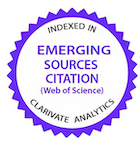Influência da gordura do leite bovino e caprino na resistência do mycobacterium fortuitum à pasteurização lenta
DOI:
https://doi.org/10.1590/1089-6891v17i119485Palavras-chave:
Higiene de Produtos de Origem Animal, Zoonoses.Resumo
Este estudo objetivou mostrar o efeito da gordura do leite caprino e bovino sobre a resistência térmica do Mycobacterium fortuitum. Amostras de leite foram divididas em duas porções, integral e desnatada, cada porção foi inoculada com M. fortuitum e então distribuída em tubos para a quantificação do agente durante a pasteurização lenta, em banho-maria. As amostras foram diluídas e semeadas em Lowenstein-Jensen (37 °C/5 dias), os resultados da contagem foram expressos em Log10 UFC/mL. O tratamento térmico reduziu 4,4 Log10 UFC/mL no leite caprino integral (2,8% de gordura), 4,9 Log10 UFC/mL no leite caprino desnatado (0,3%), 3,9 Log10 UFC/mL no leite bovino integral (5,9%) e 5,4 Log10 UFC/mL no leite bovino desnatado (0,2%), sem diferença significante, possivelmente pelo baixo número de amostras. Os valores D65 °C foram, respectivamente, 10,51 minutos, 8,61 minutos, 18,02 minutos e 7,82 minutos e o valor de R2 baixo das equações da reta indicam que outros fatores, além dos que foram estudados, influenciam a morte térmica do agente. Os resultados sugerem uma tendência de influência da gordura do leite e também da espécie animal sobre a taxa de decaimento do M. fortuitum, sendo que a pasteurização foi menos eficaz sobre o M. fortuitum no leite bovino integral.
Palavras-chave: espécie de origem do leite; gordura; micobactéria; morte térmica; redução decimal.
Downloads
Publicado
Como Citar
Edição
Seção
Licença

Este trabalho está licenciado sob uma licença Creative Commons Attribution 4.0 International License.
Autores que publicam nesta revista concordam com os seguintes termos:
- Autores mantém os direitos autorais e concedem à revista o direito de primeira publicação, com o trabalho simultaneamente licenciado sob a Licença Creative Commons Attribution que permite o compartilhamento do trabalho com reconhecimento da autoria e publicação inicial nesta revista.
- Autores têm autorização para assumir contratos adicionais separadamente, para distribuição não-exclusiva da versão do trabalho publicada nesta revista (ex.: publicar em repositório institucional ou como capítulo de livro), com reconhecimento de autoria e publicação inicial nesta revista.
- Autores têm permissão e são estimulados a publicar e distribuir seu trabalho online (ex.: em repositórios institucionais ou na sua página pessoal) a qualquer ponto antes ou durante o processo editorial, já que isso pode gerar alterações produtivas, bem como aumentar o impacto e a citação do trabalho publicado (Veja O Efeito do Acesso Livre).






























